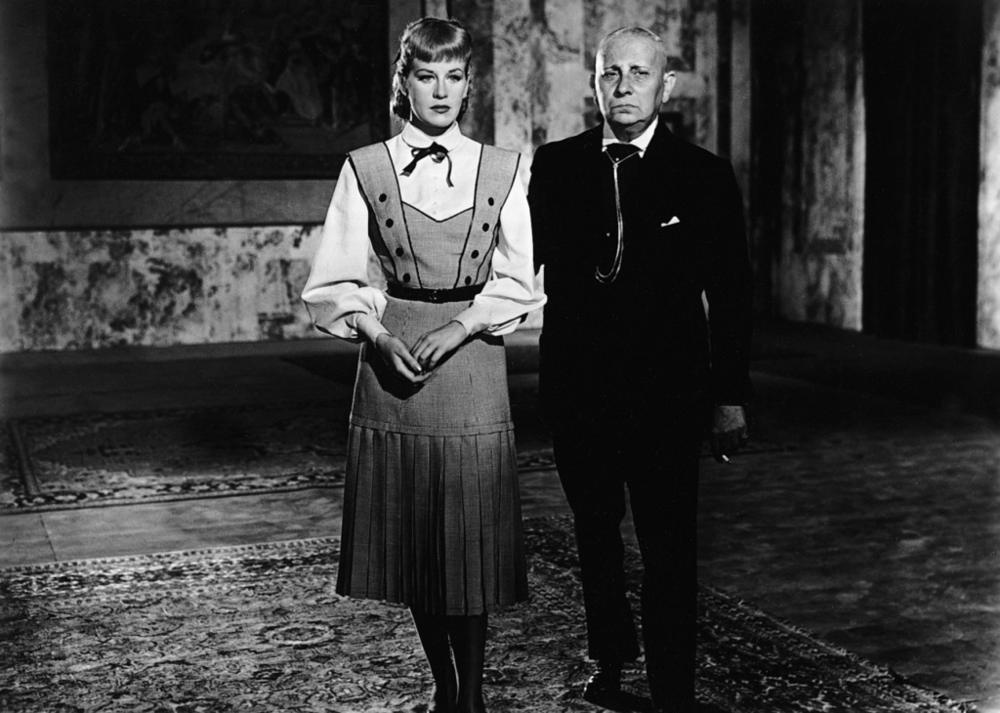Юность на экране. Репрезентация молодых людей в кино и на телевидении - Дэвид Бэкингем
Книгу Юность на экране. Репрезентация молодых людей в кино и на телевидении - Дэвид Бэкингем читаем онлайн бесплатно полную версию! Чтобы начать читать не надо регистрации. Напомним, что читать онлайн вы можете не только на компьютере, но и на андроид (Android), iPhone и iPad. Приятного чтения!
Шрифт:
Интервал:
Закладка:
Babington, B. (1998) ’Time trips and other tropes: Peggy Sue Got Married and the metaphysics of romantic comedy’, in P. Evans and С. Deleyto (eds), Terms of Endearment: Hollywood Romantic Comedy of the 1980s and 1990s. Edinburgh: Edinburgh University Press.
Backman Rogers, A. (2012) ’Ephemeral bodies and threshold creatures: the crisis of the adolescent rite of passage in Sofia Coppola’s «The Virgin Suicides» and Gus Van Sant’s «Elephant»’, NECSUS: European Journal of Media Studies, 1(1): 149-68.
Barker, M. (1984) A Haunt of Fears: The Strange History of the British Horror Comics Campaign. London: Pluto Press.
Bartosch, B. (1987) ’Peggy Sue got married and invited Charlie to dinner’, Jump Cut, 32: 3-4.
Benaim, S., Horder, J., and Anderson, J. (1973) ’Hysterical epidemic in a classroom’, Psychological Medicine, 3: 366-73.
Bennett, A. (2007) As young as you feel: youth as a discursive construct’, in P. Hodkinson and W. Deicke (eds), Youth Cultures: Scenes, Subcultures and Tribes. London: Routledge.
Bennett, J. (2006) ’Medicine, sexuality and high anxiety in 1950s New Zealand: Peter Jackson’s Heavenly Creatures (1994)’, Health and History, 8(2): 147-75.
Berridge, S. (2013) ’Doing it for the kids?’ The discursive construction of the teenager and teenage sexuality in Skins’, Journal of British Film and Television, 10(4): 785-801.
Biskind, P. (1974) ’Rebel without a cause: Nicholas Ray in the 1950s’, Film Quarterly, 28(1): 32-8.
Bourdieu, P. (1993) ’Youth is just a word’, in Sociology in Question. London: Sage.
Bradley, R. (2018) ’Black cinematic gesture and the aesthetics of contagion’, TDR [The Drama Review], 62(1): 14-30.
Bradshaw, P. (2015) ’Girls’ schools? They’re a hotpot of urges’, The Guardian, 21 April, www.theguardian.com/film/2015/apr/21/carol-morley-tracey-thorn-the-falling.
Brickman, B. J. (2012) New American Teenagers: The Lost Generation of Youth in 1970s Film. London: Continuum.
Buckingham, D. (1987) Public Secrets: ’Eastenders’ and its Audience. London: British Film Institute.
Buckingham, D. (1996) Moving Images: Understanding Children’s Emotional Responses to Television. Manchester: Manchester University Press.
Buckingham, D. (2002) ’Introduction: the child and the screen’, in D. Buckingham (ed.), Small Screens: Television for Children. London: Leicester University Press.
Buckingham, D. (2006) ’Is there a digital generation?’, in D. Buckingham and R. Willett (eds), Digital Generations: Children, Young People and New Media. Mahwah, NJ: Erlbaum.
Buckingham, D. (2007) Beyond Technology: Children’s Learning in the Age of Digital Culture. Cambridge: Polity.
Buckingham, D. (2017) ’What can a poor boy do? Representations of child poverty in British cinema, 1969-2013’, https://davidbuckingham.net/growing-up-modern/what-can-a-poor-boy-do/.
Buckingham, D. (2018a) ’Before London started swinging: representing the British beatniks’, https://davidbuckingham.net/growing-up-modern/before-london-started-swinging-representing-the-british-beatniks/.
Buckingham, D. (2018b) ’Glitter, glam and gender play: pop and teenybop in the early 1970s’, https://davidbuckingham.net/growing-up-modern/glitter-glam-and-gender-play-pop-and-teenybop-in-the-early-1970s/.
Buckingham, D. (2019) ’Young soul rebels? Soul scenes in seventies Britain’, https://davidbuckingham.net/growing-up-modern/young-soul-rebels-soul-scenes-in-seventies-britain/.
Butler, J. (1990) Gender Trouble: Feminism and the Subversion of Identity. London: Routledge.
Caine, A. (2004) Interpreting Rock Movies. Manchester: Manchester University Press.
Campbell, N. (2007) ’The highway kind: Badlands, youth, space and the road’, in H. Patterson (ed.), The Cinema of Terrence Malick: Poetic Visions of America. London: Wallflower.
Cohen, R. D. (1997) ’The delinquents: censorship and youth culture in recent U.S. history’, History of Education Quarterly, 37(3): 251-70.
Columpar, С. (2002) «Til death do us parf: identity and friendship in Heavenly Creatures’, in F. Gateward and M. Pomerance (eds), Sugar, Spice and Everything Nice: Cinemas of Girlhood. Detroit: Wayne State University Press.
Considine, D. M. (1985) The Cinema of Adolescence. Jefferson, NC: McFarland. Cowie, P. (1989) Coppola, London: Deutsch.
Daggett, С. (2013) ’UK youth television: moral panic and the process of US adaptation in Skins’, MFA dissertation, Boston University.
Dave, P. (2011) ’Tragedy, ethics and history in contemporary British social realist film’, in D. Tucker (ed.), British Social Realism in the Arts Since 1940. Edinburgh: Edinburgh University Press.
Davis, F. (1977) ’Nostalgia, identity and the current nostalgia wave’, Journal of Popular Culture, 11(2): 414-24.
Davis, G., and Dickinson, K. (eds) (2004) Teen TV: Genre, Consumption and Identity. London: British Film Institute.
Davis, J. (1990) Youth and the Condition of Britain: Images of Adolescent Conflict. London: Athlone Press.
Del Mar Grandio, M., and Bonaut, J. (2012) Transmedia audiences and television fiction’, Participations, 9(2): 558-74.
Dickinson, G. (2006) ’The Pleasantville effect: nostalgia and the visual framing of (white) suburbia’, Western Journal of Communication, 70(3): 212-33.
Dika, V. (2003) Recycled Culture in Contemporary Art and Film: The Uses of Nostalgia. London: Routledge.
Doherty, T. (2002) Teenagers and Teenpics: The Juvenilization of American Movies in the 1950s. 2nd edn, Philadelphia: Temple University Press.
Donnelly, K. J. (1998) ’The perpetual busman’s holiday: Sir Cliff Richard and British pop musicals’, Journal of Popular Film and Television, 25(4): 146-54.
Driscoll, С. (2011) Teen Film: A Critical Introduction. Oxford: Berg.
Duffett, M. (2013) Understanding Fandom. London: Bloomsbury.
Edmunds, J., and Turner, B. (2002) Generations, Culture and Society. Buckingham: Open University Press.
Ehrenreich, В., Hess, E., and Jacobs, G. ([1992] 1997) ’Beatlemania: a sexually defiant subculture?’, in K. Gelder and S. Thornton (eds), The Subcultures Reader. London: Routledge.
Elliott, P. (2014) Studying the British Crime Film. Leighton Buzzard: Auteur.
Forrest, D. (2013) ’Twenty-first century social realism: Shane Meadows and New British Realism’, in M. Fradley, S. Godfrey and M. Williams (eds), Shane Meadows: Critical Essays. Edinburgh: Edinburgh University Press.
Forster, D. (2013) One big happy family? Subverting Reaganism in Peggy Sue Got Married’, Proceedings of the Asian Conference on Film and Documentary, Osaka, Japan.
Fradley, M., and Kingston, S. (2013) ’«What do you think makes a bad dad?» Shane Meadows and fatherhood’, in M. Fradley, S. Godfrey and M. Williams (eds), Shane Meadows: Critical Essays. Edinburgh: Edinburgh University Press.
Fuller, G. (2011) ’Misery loves company’, FilmComment, 37 (November – December).
Gilbert, J. (1986) A Cycle of Outrage: America’s Reaction to the Juvenile Delinquent in the 1950s. Oxford: Oxford University Press.
Glynn, S. (2005) A Hard Day’s Night. London: I. B. Tauris.
Glynn, S. (2013) The British Pop Music Film: The Beatles and Beyond. Basingstoke: Palgrave.
Grainge, P. (2000) ’Nostalgia and style in retro America: moods, modes, and media recycling’, Journal of American and Comparative Cultures, 23(1): 27-34.
Grainge, P. (ed.) (2003a) Memory and Popular Film. Manchester:
Прочитали книгу? Предлагаем вам поделится своим отзывом от прочитанного(прослушанного)! Ваш отзыв будет полезен читателям, которые еще только собираются познакомиться с произведением.
Уважаемые читатели, слушатели и просто посетители нашей библиотеки! Просим Вас придерживаться определенных правил при комментировании литературных произведений.
- 1. Просьба отказаться от дискриминационных высказываний. Мы защищаем право наших читателей свободно выражать свою точку зрения. Вместе с тем мы не терпим агрессии. На сайте запрещено оставлять комментарий, который содержит унизительные высказывания или призывы к насилию по отношению к отдельным лицам или группам людей на основании их расы, этнического происхождения, вероисповедания, недееспособности, пола, возраста, статуса ветерана, касты или сексуальной ориентации.
- 2. Просьба отказаться от оскорблений, угроз и запугиваний.
- 3. Просьба отказаться от нецензурной лексики.
- 4. Просьба вести себя максимально корректно как по отношению к авторам, так и по отношению к другим читателям и их комментариям.
Надеемся на Ваше понимание и благоразумие. С уважением, администратор knigkindom.ru.
Оставить комментарий
-
 X.06 январь 11:58
В пространстве современной русскоязычной прозы «сибирский текст», или, выражаясь современным термином и тем самым заметно...
Вижу сердцем - Александр Сергеевич Донских
X.06 январь 11:58
В пространстве современной русскоязычной прозы «сибирский текст», или, выражаясь современным термином и тем самым заметно...
Вижу сердцем - Александр Сергеевич Донских
-
 Гость Лариса02 январь 19:37
Очень зацепил стиль изложения! Но суть и значимость произведения сошла на нет! Больше не читаю...
Новейший Завет. Книга I - Алексей Брусницын
Гость Лариса02 январь 19:37
Очень зацепил стиль изложения! Но суть и значимость произведения сошла на нет! Больше не читаю...
Новейший Завет. Книга I - Алексей Брусницын
-
 Андрей02 январь 14:29
Книга как всегда прекрасна, но очень уж коротка......
Шайтан Иван 9 - Эдуард Тен
Андрей02 январь 14:29
Книга как всегда прекрасна, но очень уж коротка......
Шайтан Иван 9 - Эдуард Тен










